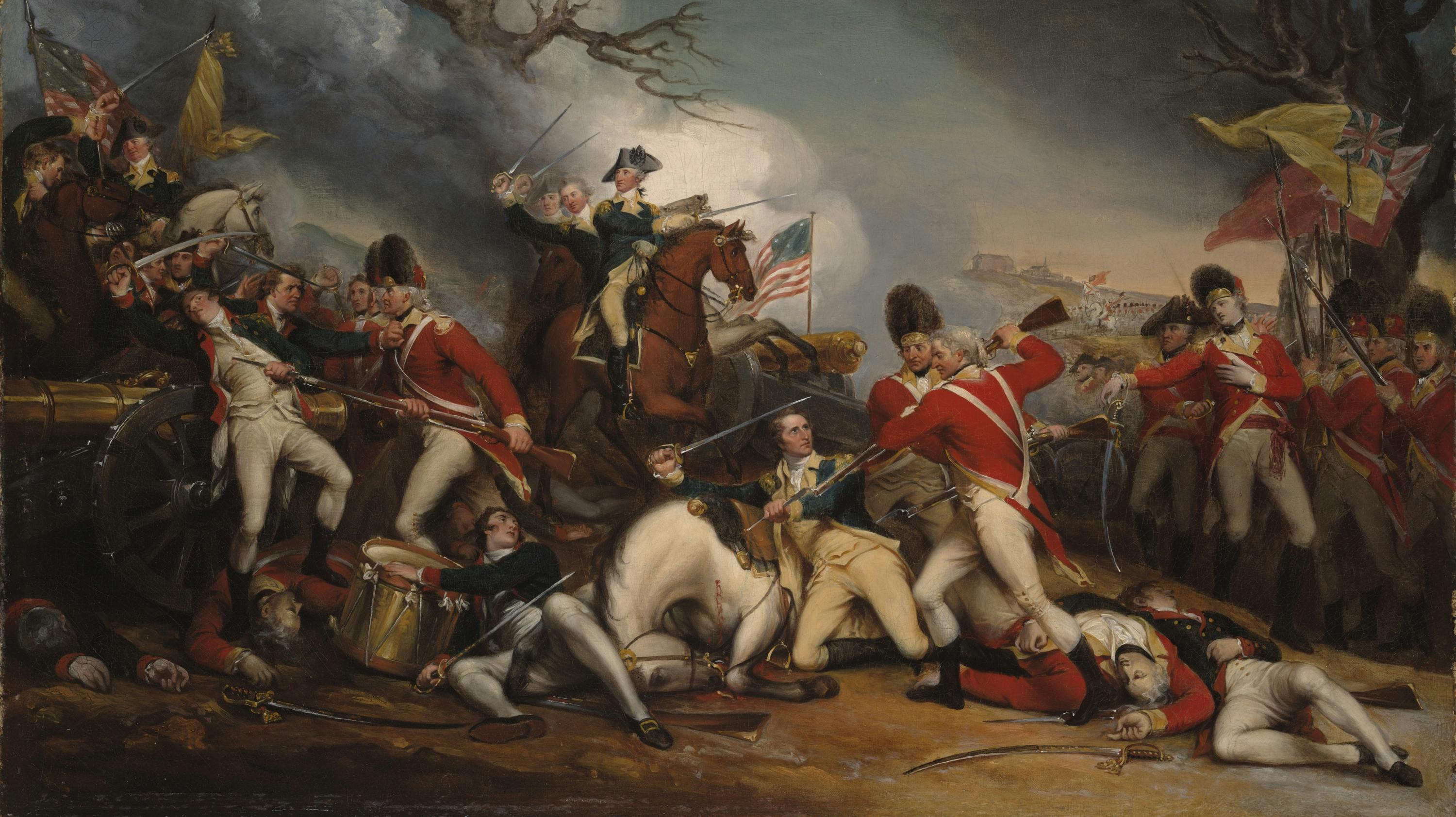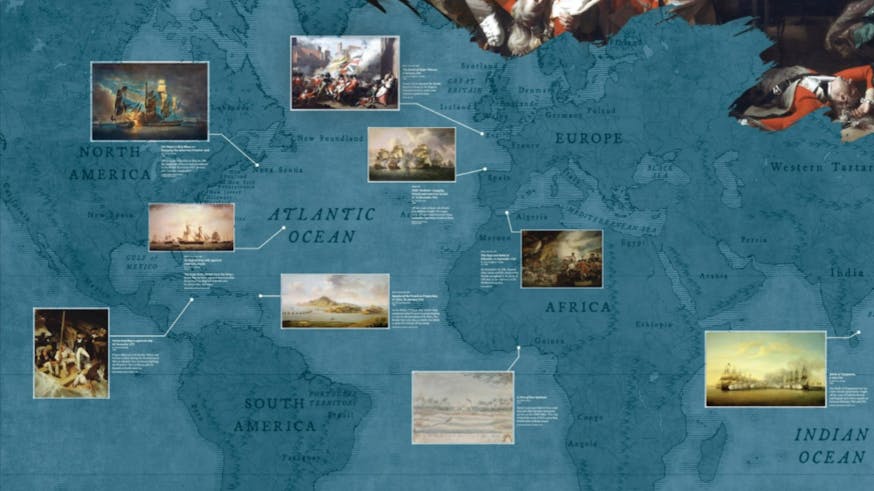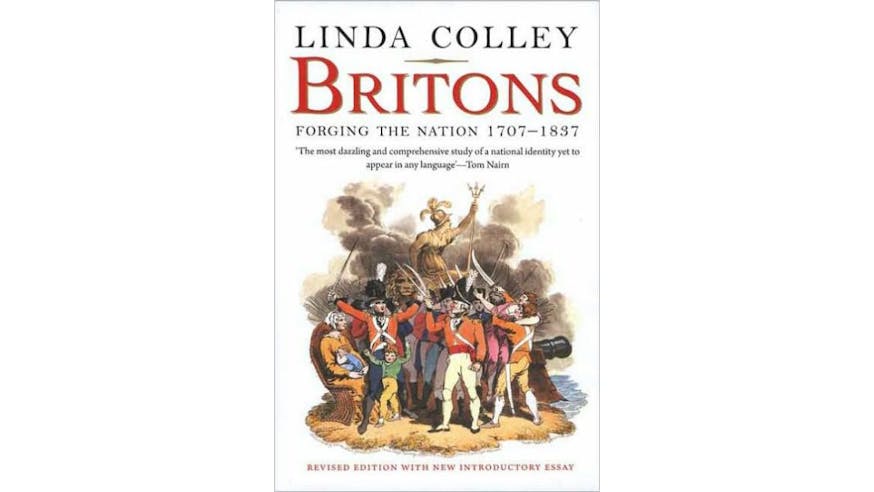Revolution Around the World
Scotland and the American Revolution
The Revolution Around the World series explores the impact of the American Revolution on the globe and the influence of people from other countries on the Revolutionary era.
What was happening around the world in 1776? When and why did different countries get involved in the Revolutionary War? What was the impact of the broader American Revolution on those countries?
Take a closer look as we examine the role Scotland played in the American Revolution.
What was happening in Scotland in 1776?
In 1776, Scotland was part of Great Britain, as it had been since the Acts of Union of 1707. The Scottish flag (the white Cross of Saint Andrew on a blue field) even formed part of the British flag (which in 1776 did not yet have the red Cross of Saint Patrick for Ireland). A traditional symbol of Scotland, the chained unicorn, appeared alongside the English lion on the Royal Coat of Arms. Scotland was a hotbed of political and intellectual activity in the years before 1776. In 1745, a conflict known as the Jacobite Rebellion exploded there after a decades-long dispute over the throne of Great Britain between the House of Hanover (King George III’s family) and the House of Stuart, a rival line descended from 17th-century monarchs. Many people in Scotland sided with the House of Stuart, headed by James (whose name, Jacobus in Latin, gave the title to the movement) and his son, Charles (“Bonnie Prince Charlie”). The rebellion failed dramatically, including a climactic battle at Culloden, and led to a government-led crackdown that removed more authority from local clan chiefs. Meanwhile, though, scholars like Adam Smith, based in lowland Scotland in cities like Glasgow and Edinburgh, emerged as leading lights in what became known as the Scottish Enlightenment, a movement that contributed to political and economic thinking across Europe and America.
When did Scotland become involved in the American Revolution?
Scotland was involved in the American Revolution from the very beginning. Formally, as part of Great Britain and the British empire, Scotland was the enemy of the new United States. On the British side, Scottish soldiers served in the American theater during the entire war, including in Highland Regiments with Scottish uniforms (kilts, fabric stockings called hose, caps called bonnets, and so on). People of Scottish descent also made up a significant proportion of the early American population and the soldiers who chose the Revolution. Notable naval captain John Paul Jones, Declaration signers James Wilson and John Witherspoon, and military officer Hugh Mercer were all born in Scotland and chose the Revolution at its beginning.
Which side did Scotland choose, and why?
While Scotland’s choice was automatic, the choices of Scottish people varied. We might be tempted to assume that a people used to British power and with fresh memories of their own rebellion (in 1745) would favor the Revolutionary cause. But for many Scottish people, loyalty to the British empire was the same as loyalty to Scotland. Moreover, many of those who had supported the Jacobite Rebellion had been advocating for the proper king, not trying to destroy the monarchy entirely, and so they rejected the Revolution when that became its aim. Flora MacDonald, for example, aided Prince Charles in 1745 but remained a staunch Loyalist in North Carolina in later years.
Who were the key Scottish players in this story?
Scottish people and those with Scottish ancestors were involved in all parts of the Revolution, including in its key battles, on the streets of Revolutionary cities, and in the halls of Congress and Parliament. To take just one example, Hugh Mercer was born in Aberdeenshire and served with the Jacobites in 1745 before fleeing to America. He fought with provincial (colonial British) forces in the Seven Years’ War and then as an officer under Washington from the beginning of the Revolutionary War. In the midst of the Battle of Princeton in 1777, he was mortally wounded by British soldiers. Years later, his son painted the scene of his father’s death, based on an earlier painting by James Peale.

What was the impact of Scotland's involvement?
The troops, political willpower, and ideas that Scotland contributed to both sides of the Revolution were influential throughout this period. For common people in Scotland, the American Revolution was a distant event and part of a long series of international conflicts that continued to draw Scottish soldiers well into the next century. Scottish-Americans contributed to many elements of life in the new United States. In recent years, referendums in Scotland have asked voters to decide whether Scotland should be independent from Great Britain, though such motions have been thus far defeated at the polls.
Dive Even Deeper
- From our Collection: View artifacts with Scottish roots such as a Bible carried at the Battle of Bunker Hill, a portrait of Lieutenant John Ross by Scottish painter David Martin, James Grant's campaign chest, and a portrait of Scottish Captain William Leslie.
- In the Galleries: On your next visit or while browsing the Virtual Museum Tour, be on the lookout for the sword that General Hugh Mercer carried at the Battle of Princeton. The sword is on loan to the Museum from the St. Andrew's Society of Philadelphia.
- Season of Independence Interactive Feature: Explore the spread of support for American independence from January to July of 1776 from the perspective of real people, like Scottish immigrant Flora MacDonald.
- Read the Revolution excerpts: Read an excerpt from Linda Colley's book, Britons: Forging the Nation, 1707-1837, which tells the story of how Great Britain formed a "national ideology" between the Act of Union of 1707 (uniting Scotland and England) and the beginning of the Victorian era in 1837. Plus, read an excerpt from A Bard of Wolfe's Army: James Thompson, Gentleman Volunteer, 1733-1830, edited by Earl John Chapman and Ian Macpherson McCulloch, which provides insight into Scotland's Highland soldiers who fought in America.
- Lecture: Watch a talk by Dr. Andrew Mackillop, professor from University of Glasgow, titled Losing and Winning: Scotland and the American Revolution, from the Museum's 2019 International Conference on the American Revolution.
Learn More

Revolution Around the World


